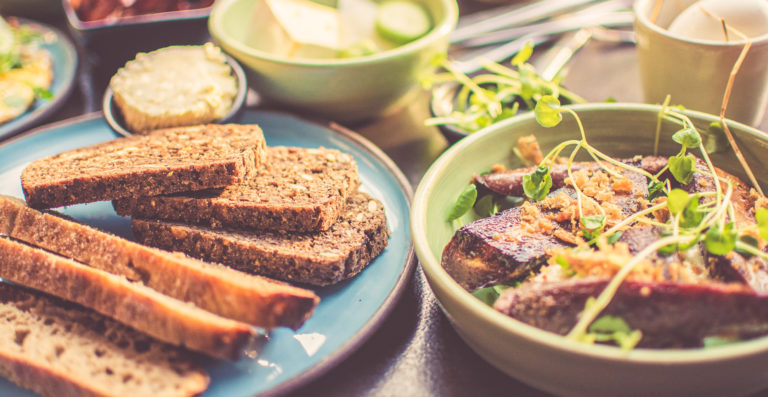
Counting calories can be a lot of work. Keeping track of everything you eat in the correct amounts get tricky when you eat out or make something at home with a lot of different ingredients. While counting calories isn’t a mandatory method for weight loss, if you want to be super organized about your diet or you’re trying to reach a goal weight by a certain date, it can be useful.
The first thing you need to know is how many calories your body burns all by itself. For this, we use BMR: your basal metabolic rate.
Your BMR indicates an estimate of the number of calories your body burns to maintain itself and use its essential processes like breathing and organ function while you sleep. It accounts for about 60 – 70% of all the calories you burn in a day.
It’s important to know that the amount of calories your body uses per day will depend greatly on your genetics, age, weight, body composition, activity level, and your training regimen; so using your BMR to gauge the number of calories you need is only an estimate.
After your BMR is calculated, we multiply this by the level of physical activity (PAL) you get on a regular day.
This factors in things like walking to work, being on your feet all day, or just spending most of your day sitting at a desk. Remember, these are not exact numbers. Everyone has different body chemistry, so these methods only estimate the amount of calories you’ll burn in a day.
Calculating your BMR
From jillianmichaels.com
Woman: 655 + (4.3 × weight in lbs) + (4.7 × height in inches) – (4.7 × age)
Men: 66 + (6.23 × weight in lbs) + (12.7 × height in inches) – (6.8 × age)
Example: If you’re a woman who weighs 150lbs, 69″ tall, and 30 years old, your BMR would be 1483. [655 + (645) + (324.3) – (141) = 1483.3] This means that your basic bodily functions, at rest, burn an estimated 1483 calories. That’s before accounting for any other activities you might do in a day like walk to work, go for a run, etc.
Finding Your PAL
Next, in order to account for an overall, daily level of activity, we need to find out your daily physical activity level (PAL), then we multiply it by our BMR number. To calculate for our daily activity level, here’s the criteria:
1.1 = Inactive or sedentary (e.g. drive to work then sit all day at a desk)
1.2 = Lightly active (e.g. on your feet for at least have the day, like a doctor or salesperson)
1.3 = Moderately active (e.g. moving all day, limited time to be sedentary like a gardener or postal worker)
1.4 = Highly active (e.g. moving all day with high amounts of manual labor, like construction, movers, etc)
Example: Let’s assume a moderately active lifestyle; so we’d multiply our BMR of 1483 x our PAL of 1.3 to get 1927.9 Using this method, to maintain our current body weight of 150lbs, we’d need to consume 1928 calories a day. This doesn’t factor in any extra exercise you do in a day, so spending a few hours at the gym, for example, would be factored separately into your daily calorie total.
Limiting Calories
When you’re trying to lose weight, you generally want to limit your calories, but be aware that reducing your calories too much can slow down your metabolism. For fat loss, aim to reduce calories by about 15% of your total calorie allowance.
Example: To lose weight, using the results from the previous calculation, you can drop your daily calorie limit to about 1639 calories a day. This creates a calorie deficit of about 289 calories a day. The general consensus is that there are 3500 calories in a pound (But this can vary a ton depending on your body composition), so if you keep to this 289 calorie deficit a day, you’ll lose a pound in about 12 days, without hurting your metabolism. Want to lose the weight faster? Get more exercise.
In Summary
There are a number of methods for finding your BMR and total daily calorie expenditure, but I like this one because it takes your age and height into account as well. Other methods are a bit simpler, but don’t take anything aside from your weight and gender into account, which can lead to results that are too far off. Hopefully this one works well for you.






Leave a Comment